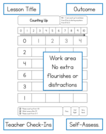
Grade One, Unit One, NumbersNo frills math units with brief K outcome review as well as daily math book.
- Subject:
- Math
- Material Type:
- Homework/Assignment
- Author:
- Judy Genereux
- Date Added:
- 12/31/2023

Grade One, Unit One, NumbersNo frills math units with brief K outcome review as well as daily math book.

Students determine the coefficient of restitution (or the elasticity) for super balls. Working in pairs, they drop balls from a meter height and determine how high they bounce. They measure, record and repeat the process to gather data to calculate average bounce heights and coefficients of elasticity. Then they extrapolate to determine the height the ball would bounce if dropped from much higher heights.

This project is best completed prior to reading the novel, Mistasiniy: Buffalo Rubbing Stone by Mary Harelkin Bishop to avoid influence of references in the text. The original size of the Lake Diefenbaker mistasiniy is introduced in the novel's preface, while the size of the mistasiniy on Danny’s family’s land is mentioned on page 109 as part of Rose’s diary. Students will work individually on a math inquiry problem challenging students to solve questions using estimation, approximations, geometry, analytical thinking, creative thinking, communication, and technology skills. Cross-curricular connections can be made with ELA, Social Studies, Science, and Arts Education. More information on bison/buffalo rubbing stones

In this activity, students explore the importance of adequate sampling strategies when conducting a scientific investigation. They are tasked with determining the average temperature of the Earth, using data sets easily found on the Internet, and determine the kind and size of sample necessary to calculate a representative average. The resource includes a student data sheet and an authentic assessment for the module, where students discuss the establishment of a habitation site on Mars. This is Activity C in module 2, titled "Modeling Hot and Cold Planets," of the resource, Earth Climate Course: What Determines a Planet's Climate? The course aims to help students to develop an understanding of our environment as a system of human and natural processes that result in changes that occur over various space and time scales.
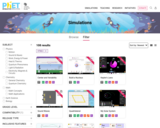
PhET Sims are now available in HTML5 as well!
Simulations can be sorted by subject area or grade. This is very helpful.
PhET is a collection of interactive computer simulations for teaching and learning physics, chemistry, math, and other sciences.
Simulations can be used directly on the site or downloaded and used that way.
The simulations are animated, interactive, and game-like environments where students learn through exploration. They emphasize the connections between real-life and the underlying science. These great activities help students visualize abstract concepts!
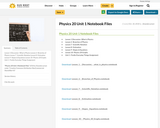
Lesson 1 Discussion- What is Physics
Lesson 2- Branches of Physics
Lesson 7- Scientific Notation
Lesson 8- Estimation
Lesson 9- Slopes & Equations
Lesson 10- Physics 20 Graphs
Unit 1- Fizziks Everyday Things Assignment

The three tasks in this set are not examples of tasks asking students to compute using the standard algorithms for multiplication and division because most people know what those kinds of problems look like. Instead, these tasks show what kinds of reasoning and estimation strategies students need to develop in order to support their algorithmic computations.

The three tasks (including part 1 and part 3) in this set are not examples of tasks asking students to compute using the standard algorithms for multiplication and division because most people know what those kinds of problems look like. Instead, these tasks show what kinds of reasoning and estimation strategies students need to develop in order to support their algorithmic computations.
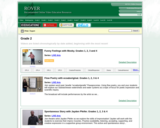
Check out these great video/curricular resources for Grade 2. The ROVER videos all indicate the curriculum outcomes that they address.
ROVER (Recommended Online Video Education Resources) is a video streaming service for Saskatchewan teachers and students in the PreK-12 education system. It is managed and maintained by the Saskatchewan Ministry of Education. ROVER is a video-on-demand service that provides teachers and students with the convenience of immediate access to streamed, educational videos that support curricula.
This site also offers all of the curriculum documents for all grade levels.
If you are unable to access the site, it may be because a Saskatchewan Ministry of Education Blackboard login is required. All students have an Edonline account, so contact your child's school or the Ministry of Education’s Support Desk at 1-866-933-8333 or email at stans@gov.sk.ca for login information. Your child's student number will be required.
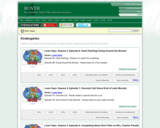
Check out these great video/curricular resources for Kindergarten. The ROVER videos all indicate the curriculum outcomes that they address.
ROVER (Recommended Online Video Education Resources) is a video streaming service for Saskatchewan teachers and students in the PreK-12 education system. It is managed and maintained by the Saskatchewan Ministry of Education. ROVER is a video-on-demand service that provides teachers and students with the convenience of immediate access to streamed, educational videos that support curricula.
This site also offers all of the curriculum documents for all grade levels.
If you are unable to access the site, it may be because a Saskatchewan Ministry of Education Blackboard login is required. All students have an Edonline account, so contact your child's school or the Ministry of Education’s Support Desk at 1-866-933-8333 or email at stans@gov.sk.ca for login information. Your child's student number will be required.

This design challenge from Chris Woods will have your students tapping into their creativity and a wealth of skills including Math to build a better shoe!

This is a website full of resources for PowerPoint and projector and students to see math visually through games.

Families can take math estimation challenges in a wide variety of fun ways.
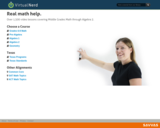
"Real math help.
Over 1,500 video lessons covering Middle Grades Math through Algebra 2."

Students learn about trigonometry, geometry and measurements while participating in a hands-on interaction with LEGO® MINDSTORMS® NXT technology. First they review fundamental geometrical and trigonometric concepts. Then, they estimate the height of various objects by using simple trigonometry. Students measure the height of the objects using the LEGO robot kit, giving them an opportunity to see how sensors and technology can be used to measure things on a larger scale. Students discover that they can use this method to estimate the height of buildings, trees or other tall objects. Finally, students synthesize their knowledge by applying it to solve similar problems. By activity end, students have a better grasp of trigonometry and its everyday applications.